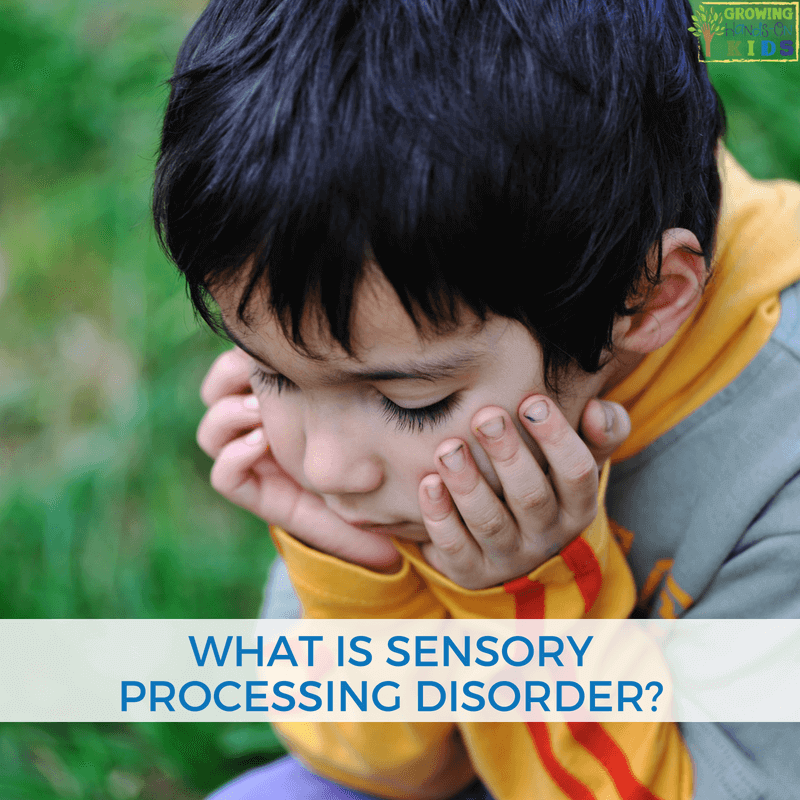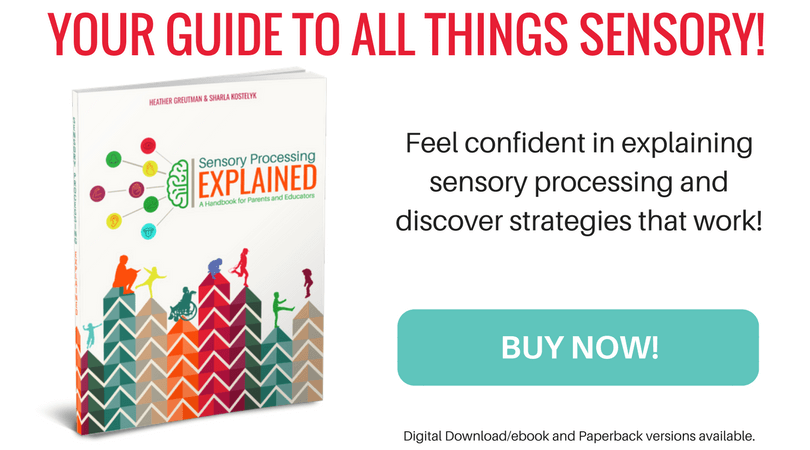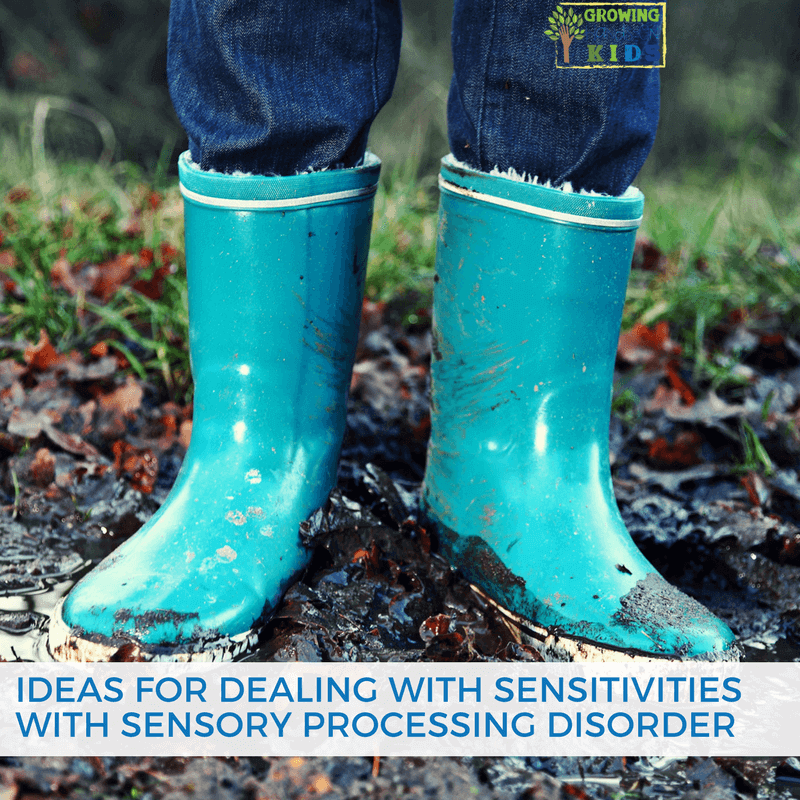Answers To Common Questions About Sensory Processing Disorder
Affiliate and Referral links are used below to promote products I love and recommend. I receive a commission on any purchases made through these links. Please see my disclosure policy for more details. As an Amazon Associate, I earn from qualifying purchases.
A child with sensory processing dysfunction or sensory processing disorder (SPD) has trouble with receiving, processing, and responding to sensory information. This can make life difficult in many situations. Here's an overview of this disorder.
Table of contents
What is Sensory Processing Disorder?
Sensory Processing Disorder (SPD), originally called sensory integration dysfunction is when the sensory signals picked up by the nervous system are either ignored or not interpreted appropriately by the brain. A person with SPD will find it difficult to process and respond appropriately to all the incoming information from their environment, surroundings, or senses.
Cause of Sensory Processing Disorder
Sensory processing disorder (SPD) is considered a neurological disorder in which sensory information that a person receives from their senses is not recognized or organized correctly by the brain and results in an abnormal response.
The cause of sensory processing disorder is still largely unknown, though there is thought to be both a hereditary/genetic and environmental component. Those with a diagnosis of prematurity, Autism Spectrum Disorders, and other developmental disorders have an increased likelihood of sensory processing disorder.
In a recent study done by researchers at the University of California San Francisco (2016), it was suggested that there is a biological basis for sensory processing disorder. The study found that the subjects with sensory processing disorder had abnormal white matter tracts in the brain, including the connection between the left and right sides of the brain, compared to their typically developing peers.
A 2006 study also found that twins who are hypersensitive to light and sound had a strong genetic component for the cause of these sensitivities.
It should also be noted that Sensory Processing Disorder is not a recognized diagnosis in the Diagnostic and Statistical Manual of Mental Disorders (DSM-5). This manual is considered the most comprehensive, current, and important resource for health professionals, social workers, and legal specialists to classify and diagnose mental disorders. It is also the same manual used to diagnose Autism Spectrum Disorder (ASD) and many other common childhood mental and developmental disabilities.
Because of this, Sensory Processing Disorder is not often “diagnosed” by the medical community. You may see it described as “sensory processing difficulties” or “sensory processing issues” in the medical setting. Doctors will often refer to Occupational Therapy to evaluate for any sensory processing concerns related to SPD. Diagnoses such as Autism, ADHD, Anxiety, and other mental health disorders can also have similar sensory processing symptoms.
Critics of sensory processing disorder believe that many children on the spectrum and with other disabilities do have sensory processing difficulties. However, they feel that there is not enough research to show sensory processing disorder needs to be a stand-alone diagnosis. They also feel that sensory integration therapy (SIT) does not have enough research behind it to prove it has a lasting effect as a form of treatment.
Even without its inclusion in the DSM-5, there are many experts who believe it should be added, based on the research mentioned above and continued research. If you talk to any parent, educator, or therapist who works with children with sensory processing disorder they can assure you that the problems and issues facing many young children with this disorder are more than real.
If you do suspect your child has a sensory processing disorder, you will need a referral to an Occupational Therapist who can evaluate for sensory processing disorder using a variety of assessments and then make recommendations for treatment. There is not one evaluation or test that can tell definitively if a child or person has a sensory processing disorder. Many of the assessments used will rely on clinical observation and parent questionnaires to help guide treatment.
Symptoms of SPD
Sensory processing can affect one sense or multiple senses depending on the individual. You will often see the two terms below when describing someone's sensory sensitivities.
- Hypersensitivity- Over-responsive to sensory input, including fight or flight response.
- Hyposensitivity- Under-responsive to sensory input, they need extra input.
- Under-Responsive – Does not recognize sensory input and may often seem like they are ignoring you or self-absorbed.
The 8 Sensory Systems involved include:
- Tactile (touch) – this can look like sensitivity to types of clothing or fabric, textures, etc. Or it can
- Auditory (hearing) – sensitivity to loud noises, needing more noise in order to focus
- Visual (sight) – sensitivity to bright lights or too many visual stimuli in the environment
- Gustatory (taste) – sensitivity to food textures and taste (picky eaters)
- Olfactory (smell) – sensitivity to certain smells or craving for certain smells
- Proprioceptive (input from the muscles and joints) – avoids big movement or craves lots of movement and input through the muscles and joints.
- Vestibular (sense of movement) – avoids or craves constant motion such as spinning, swinging, hanging upside down, etc
- Interoception (internal sensation) – internal sensations such as heartbeat, needing to use the restroom, etc. can be distracting or they may not realize they need to use the bathroom
This is just a very basic overview of each system. I have a lot more details on this topic in the link below.
You can read more about each sensory system in my 8 Types of Sensory Systems post here.
Sensory defensiveness will vary in different degrees of stress and anxiety with each individual. However, it is important to remember that a child with SPD may misperceive the world as dangerous, alarming, or just irritating.
Subtypes of Sensory Processing Disorder
As I mentioned above, there are 3 different categories of sensory processing disorder with 5 other subtypes under those 3 categories. Let's take a look at each one.
SENSORY MODULATION DISORDERS
Sensory modulation disorders include 3 different subsets that have to do with the body's ability to recognize and regulate sensory input.
Sensory Over-Responsive will often look like a fight or flight response. These individuals are bombarded with even the slightest sensory input and often respond by being withdrawn or avoiding certain environments or situations. This is also referred to as being “sensory defensive”.
“Treating sensory defensiveness first reduces sensory problems and increases the effectiveness of other forms of intervention.” Sensory Defensiveness in Children Aged 2-12. Patricia Wilbarger, Med, OTR, FAOTA and Julia Leigh Walbarger, MS, OTR
Sensory Under-Responsive will often look like an individual is withdrawn or self-absorbed because they do not even recognize the sensory input around them. They have poor body awareness and may not realize they are hurt or realize something is hot or cold.
Sensory Craving sounds just like it states, this person craves sensory input and often will not stay still and is constantly on the move to find it. These children will also bump into objects.
SENSORY-BASED MOTOR DISORDERS
Sensory-Based Motor Disorder (including Postural-Ocular Disorder and Dyspraxia) is when a person has difficulties controlling and stabilizing their body movements. It can also include poor vision and oculomotor (movement of the eye) control. This can show poor posture and core strength, poor balance, poor tracking of visual stimuli, poor fine motor control, poor playing skills, poor articulation, clumsiness, and difficulty with many activities of daily living (hygiene and self-care, eating, bathroom, etc).
SENSORY DISCRIMINATION DISORDER
Sensory Discrimination Disorder is when a person has difficulty understanding incoming sensory input and interpreting it appropriately. This results in poor recognition and interpretation of sensory stimuli and detection of different or similar sensations. You may see poor balance, using too much or too little force on an object, difficulty following directions, manipulating objects when out of sight, or distinguishing between similar sounds.
Sensory Processing Explained: A Handbook for Parents and Educators
In Sensory Processing Explained: A Handbook for Parents and Educators, you will find all the detailed information you need to know about sensory processing disorder, including red flags for each sensory system (one for parents and one for educators), as well as resources for supporting your child with sensory processing challenges in the home or classroom.
This book is perfect for any parent or educator wanting to learn more about supporting their child or student. It is also a great resource for professionals to use in sharing about SPD with their clients, students, and patients.
You May Also Like:
- Ideas for Dealing with Sensitivities with Sensory Processing Disorder
- Calm Down Toolkit for Kids
- Sensory Overload Signs in the Classroom
- Sensory Processing and the Teenage Years
Sources for this post:
Acevedo, B. P., Aron, E. N., Aron, A., Sangster, M.-D., Collins, N., & Brown, L. L. (2014). The highly sensitive brain: an fMRI study of sensory processing sensitivity and response to others’ emotions. Brain and Behavior, 4(4), 580–594. http://doi.org/10.1002/brb3.242
Chang Y-S, Gratiot M, Owen JP, Brandes-Aitken A, Desai SS, Hill SS, Arnett AB, Harris J, Marco EJ and Mukherjee P (2016) White Matter Microstructure is Associated with Auditory and Tactile Processing in Children with and without Sensory Processing Disorder. Front. Neuroanat. 9:169. doi: 10.3389/fnana.2015.00169
Chang Y-S, Owen JP, Desai SS, Hill SS, Arnett AB, Harris J, et al. (2014) Autism and Sensory Processing Disorders: Shared White Matter Disruption in Sensory Pathways but Divergent Connectivity in Social-Emotional Pathways. PLoS ONE 9(7): e103038. https://doi.org/10.1371/journal.pone.0103038
Leigh, S. (2016, January 26). Brain's Wiring Connected to Sensory Processing Disorder. Retrieved March 15, 2018, from https://www.ucsf.edu/news/2016/01/401461/brains-wiring-connected-sensory-processing-disorder

Heather Greutman, COTA
Heather Greutman is a Certified Occupational Therapy Assistant with experience in school-based OT services for preschool through high school. She uses her background to share child development tips, tools, and strategies for parents, educators, and therapists. She is the author of many ebooks including The Basics of Fine Motor Skills, and Basics of Pre-Writing Skills, and co-author of Sensory Processing Explained: A Handbook for Parents and Educators.




I forgot to add, just because colleagues are not fully into it, that does not mean, it does not exist or it is not studied. Please, let us continue working on it since there many neuroscience articles that do explicitly state its loci and how it has become a center of attraction not just the structure but the functions related to these loci.
I am a child and adult psychiatrist . Over the years, I am convinced that the Sensory Processing Disorder will become full chapter in the developmental areas of DMS. It is just a matter of continuing working on it and publish correlating articles between this most interesting SPD and neuroscience.
I totally buy into sensory processing disorder and have a son with sensory processing issues. However, what I’m running into is that there is not an actual diagnosis of sensory processing disorder by physicians… This presents a great difficulty in some scenarios such as trying to get special education services in my experience so far. Any tips on this?
Yes, unfortunately, SPD is not an official diagnosis in the DSM-5 so most doctors won’t use it. Usually, you have to get a diagnosis for some of the symptoms if they present, like anxiety, ADD/ADHD, or even Autism Spectrum.
Hi Heather just a question. At what age can this be diagnosed? I have a 16 month old baby which acts crazy she yells for everything and fight for everything I don’t know if this is a normal behavior for her age or if this could be something else.
For years I have been trying to get a handle on what is going on with my son. I have gotten so many different types of diagnosis for him I’m about to rip my hair out. Every couple of weeks changing his meds because nothing is working. Then here I am reading this and I’m like OMG this his him to a tee!! Why have I never heard of this?? Not by his therapist or phycologist or his many different Dr or teachers??? All they do is throw him out of school and he has only just turned 6!! Please if you can help me I would be forever greatful!!!
Hey Michele,
I would mention it to his therapist, psychologist or your pediatrician. They can help refer you on to get further testing. I hope you are able to find some answers.
Hi,
My daughter was diagnosed as a child with audio processing disability and took some classes during school that helped quite a bit. But I didn’t understand how it could affect all aspects of her life and not just school. Now she is 19 and we still have social and behavioral issues with her that seem to be “not quite normal”. (She is #4 of 5 children)
Is it too late to strengthen that vestibular system you talk about. Are there other options I should be looking in to? How do I find a reputable OT if I need one? (I am in San Antonio Tx. Any help would be much appreciated
Hi Leslie,
No, it is definitely not too late to strengthen the vestibular system. Any type of activity that requires balance or changing the position of the head would be great to do. As far as treatment options, there are places that specialize in balance therapy and re-adjusting the inner ear etc. My mom did this after she had a severe car accident and had balance issues. I would start by talking to your family doctor and tell him/her your concerns. Sometimes D.O’s are a little more open to other treatments than M.D’s. A great place to find some OTs would be to check to see if your local university or college has an OT program and if they know of any state OT organizations. I do believe San Antonio has an OT program somewhere in the city, because I looked into it once to get my Masters.
You also might want to check into any Physical Therapists that specialize in balance and inner ear/vestibular issues. Typically if they have any type of sensory processing speciality they will be familiar with what to do. The same goes for OT.